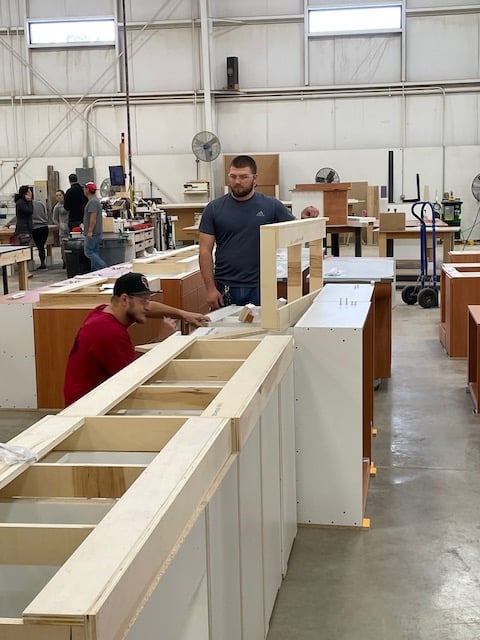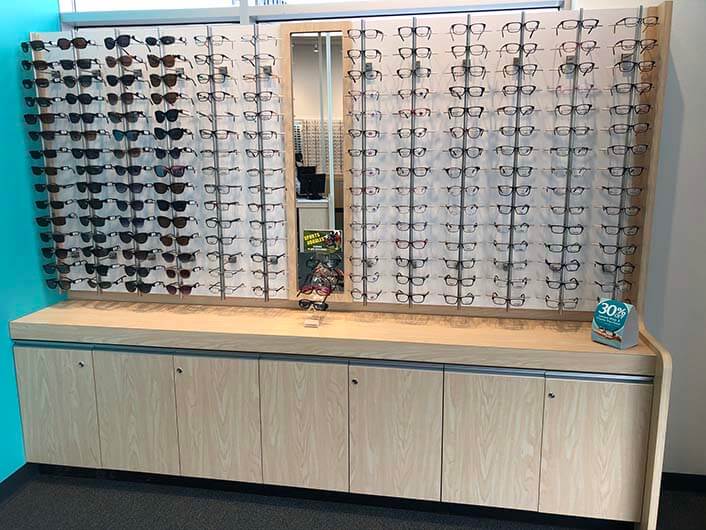In the world of interior design, particularly for retail spaces and bespoke environments, two terms are often heard but not always clearly understood: millwork and casework. At FC Dadson, we specialize in both, and we're here to shed light on these concepts, helping business owners, retail store managers, interior designers, and architects make informed decisions.
Millwork: The Art of Custom Craftsmanship
Millwork refers to custom woodwork that has been traditionally created in a mill. Items such as doors, window casings, baseboards, and paneling fall under this category. In retail environments, millwork is often seen in the form of intricate, uniquely designed shelving, elegant counters, and sophisticated display cabinets.
The beauty of millwork lies in its customization. Each piece is tailored to fit the specific dimensions and style of a space. This bespoke approach allows for greater design flexibility and uniqueness, ensuring that no two pieces are exactly alike.
.png?width=800&height=600&name=cook%20county%20hospital%20reception%20desk-1-1%20(1).png)
Casework: Consistency and Efficiency
On the other hand, casework involves the production of boxes or ‘cases’ - think of items like cabinets and bookshelves. In retail, casework typically appears as standard shelving units, storage cabinets, and display cases. Unlike millwork, casework is often pre-fabricated, following set dimensions and designs. However, at FC Dadson we design casework to fit each customers specific needs.
The advantage of casework is its consistency and efficiency in production. For retail spaces that require uniformity, such as chain stores, casework offers a practical and cost-effective solution. It's also generally quicker to produce and install compared to custom millwork.

Millwork vs Casework:
When it comes to design flexibility, millwork leads the way. It allows for more creative expression and can be tailored to fit any space, style, or theme. Casework, while more limited in customization, offers a sleek and uniform look that can be ideal for certain design aesthetics.
In terms of material choices, millwork offers a wide range, from classic woods to modern composites, allowing for a broader spectrum of textures and finishes. Casework, while also available in various materials, often sticks to more standard options to maintain efficiency in production.
Regarding applications, millwork is typically favored in high-end retail environments or bespoke interior designs where uniqueness and elegance are paramount. Casework finds its niche in spaces where functionality and uniformity are more critical, such as in multi-location retail chains or utilitarian spaces.

FC Dadson and Custom Solutions to Your Needs
At FC Dadson, we understand the importance of both millwork and casework in creating effective retail environments. We work closely with our clients to determine which option best suits their specific needs, considering factors like aesthetic appeal, functionality, and budget.
Whether you're looking for custom millwork to make your retail space stand out or efficient casework solutions for a functional design, our team at FC Dadson has the expertise and experience to bring your vision to life.
Conclusion
Understanding the differences between millwork and casework is crucial in making the right choice for your retail or custom design needs. With this knowledge, and with FC Dadson's expertise, you can create spaces that are not only functional but also visually appealing and unique to your brand.



.png?width=203&height=142&name=IFA%20Member%20Logo%20EPS%20(1).png)
.png%20for%20web.png?width=203&height=94&name=2022_VetFran_Logo%20(002).png%20for%20web.png)
.png?width=203&height=150&name=ICSC-logo-tag-full-color%20(1).png)